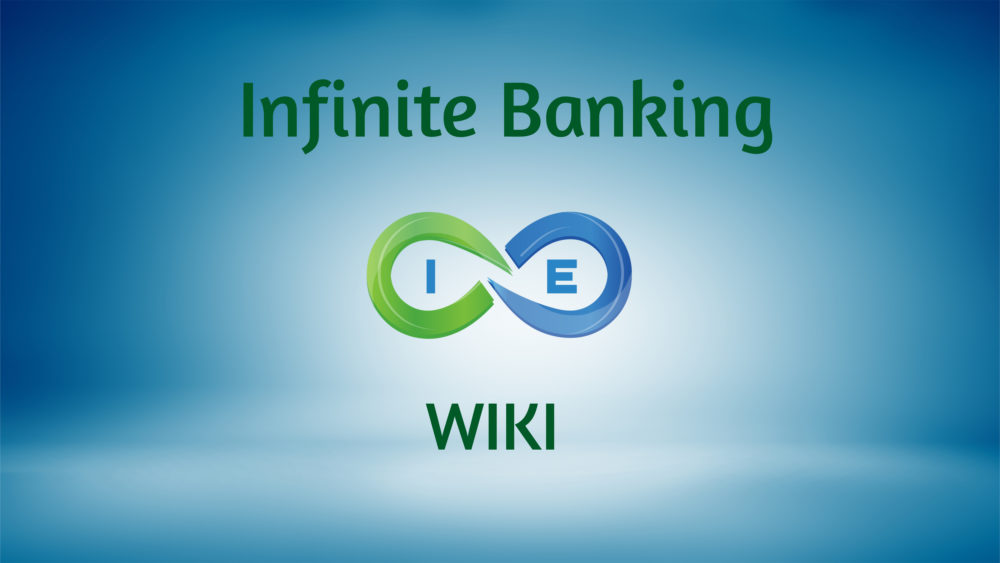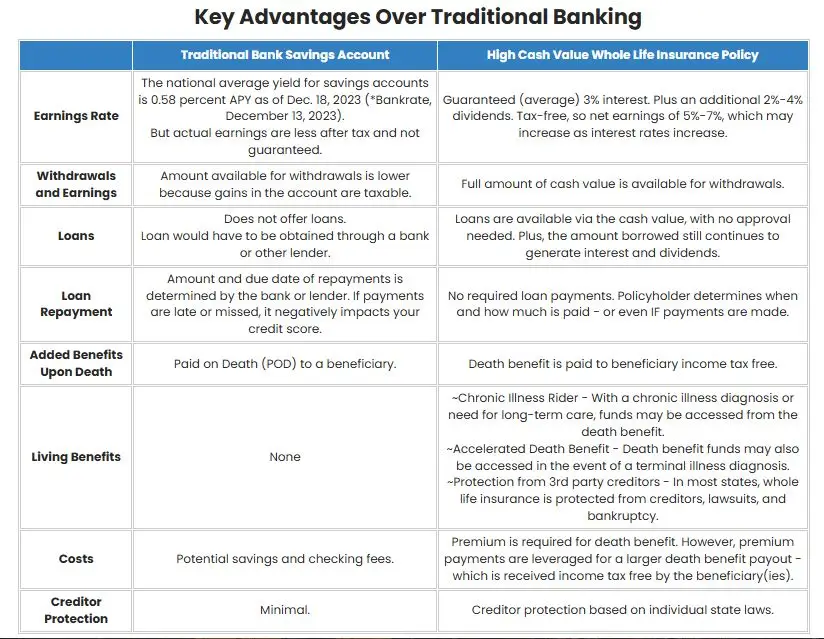All Categories
Featured
Table of Contents
Okay, to be reasonable you're really "banking with an insurance provider" instead of "financial on yourself", however that concept is not as simple to market. Why the term "boundless" financial? The idea is to have your money functioning in several places at once, as opposed to in a solitary place. It's a little bit like the idea of getting a residence with cash, after that borrowing against your home and placing the cash to work in an additional investment.
Some individuals like to speak concerning the "rate of money", which essentially implies the exact same point. That does not indicate there is nothing rewarding to this idea once you get past the advertising.
The whole life insurance coverage market is pestered by extremely costly insurance policy, huge commissions, shady sales methods, reduced prices of return, and improperly educated customers and salespeople. If you desire to "Financial institution on Yourself", you're going to have to wade right into this sector and in fact acquire entire life insurance policy. There is no alternative.
The warranties fundamental in this item are crucial to its function. You can borrow against the majority of types of cash worth life insurance policy, but you shouldn't "bank" with them. As you purchase a whole life insurance policy policy to "bank" with, bear in mind that this is a completely different area of your economic strategy from the life insurance policy area.
Buy a large fat term life insurance policy plan to do that. As you will see below, your "Infinite Financial" plan really is not mosting likely to dependably provide this essential economic feature. Another trouble with the truth that IB/BOY/LEAP counts, at its core, on a whole life policy is that it can make acquiring a plan bothersome for a lot of those interested in doing so.
Infinite Banking Concept Calculator
Hazardous hobbies such as diving, rock climbing, sky diving, or flying additionally do not blend well with life insurance policy products. The IB/BOY/LEAP supporters (salespeople?) have a workaround for youbuy the policy on a person else! That might function out great, considering that the factor of the plan is not the survivor benefit, however bear in mind that getting a plan on small youngsters is extra pricey than it ought to be given that they are generally underwritten at a "standard" rate as opposed to a preferred one.

The majority of policies are structured to do either points. Many generally, policies are structured to take full advantage of the payment to the agent marketing it. Cynical? Yes. However it's the fact. The commission on a whole life insurance coverage plan is 50-110% of the initial year's costs. Sometimes plans are structured to maximize the fatality benefit for the premiums paid.
With an IB/BOY/LEAP plan, your objective is not to take full advantage of the survivor benefit per buck in costs paid. Your goal is to maximize the cash worth per dollar in costs paid. The price of return on the policy is very essential. Among the best means to take full advantage of that factor is to get as much cash as feasible into the plan.
The best means to improve the price of return of a policy is to have a reasonably small "base plan", and then put even more money right into it with "paid-up enhancements". With more cash in the policy, there is even more cash money worth left after the costs of the death advantage are paid.
An extra advantage of a paid-up enhancement over a routine costs is that the commission rate is lower (like 3-4% rather of 50-110%) on paid-up additions than the base plan. The less you pay in commission, the greater your price of return. The rate of return on your cash worth is still mosting likely to be unfavorable for some time, like all money worth insurance coverage plans.
It is not interest-free. It may cost as much as 8%. Many insurance provider only supply "direct recognition" lendings. With a direct recognition finance, if you borrow out $50K, the returns price related to the cash money value annually just puts on the $150K left in the plan.
How To Use Whole Life Insurance As A Bank
With a non-direct acknowledgment loan, the company still pays the same reward, whether you have actually "borrowed the money out" (technically against) the policy or not. Crazy? That understands?
The companies do not have a resource of magic totally free money, so what they give up one location in the plan have to be drawn from an additional place. However if it is drawn from a feature you care less about and put into a function you care extra about, that is an advantage for you.
There is another critical feature, normally called "laundry car loans". While it is wonderful to still have actually dividends paid on money you have actually taken out of the plan, you still have to pay rate of interest on that particular car loan. If the returns price is 4% and the funding is charging 8%, you're not precisely appearing ahead.
With a clean car loan, your loan rates of interest coincides as the returns price on the policy. While you are paying 5% passion on the lending, that interest is totally balanced out by the 5% returns on the finance. In that regard, it acts just like you withdrew the money from a financial institution account.

5%-5% = 0%-0%. Without all three of these elements, this plan merely is not going to function extremely well for IB/BOY/LEAP. Nearly all of them stand to benefit from you getting into this idea.
There are numerous insurance representatives talking concerning IB/BOY/LEAP as a feature of whole life who are not in fact marketing plans with the essential features to do it! The issue is that those who know the idea best have a huge conflict of interest and generally pump up the advantages of the idea (and the underlying policy).
Life Insurance Through Banks
You should contrast borrowing against your policy to withdrawing money from your cost savings account. No money in cash money worth life insurance. You can place the cash in the financial institution, you can spend it, or you can buy an IB/BOY/LEAP policy.
It expands as the account pays rate of interest. You pay tax obligations on the rate of interest each year. When it comes time to purchase the watercraft, you withdraw the cash and buy the watercraft. You can save some more cash and put it back in the financial account to begin to make interest once more.
When it comes time to buy the watercraft, you sell the investment and pay taxes on your long term resources gains. You can conserve some even more cash and buy some more financial investments.
The money worth not utilized to spend for insurance and compensations expands throughout the years at the returns rate without tax drag. It begins with unfavorable returns, but with any luck by year 5 approximately has recovered cost and is growing at the dividend price. When you go to buy the watercraft, you obtain against the policy tax-free.
Self Banking Concept
As you pay it back, the money you repaid begins expanding once more at the returns rate. Those all work quite similarly and you can compare the after-tax rates of return. The fourth choice, nevertheless, works really differently. You do not save any kind of cash neither get any kind of financial investment for years.
They run your credit report and provide you a finance. You pay rate of interest on the borrowed money to the bank till the lending is paid off. When it is repaid, you have a virtually worthless watercraft and no money. As you can see, that is not anything like the first three alternatives.
Latest Posts
Infinite Banking Calculator
A Life Infinite
Bank On Yourself: Safe Money & Retirement Savings Strategies